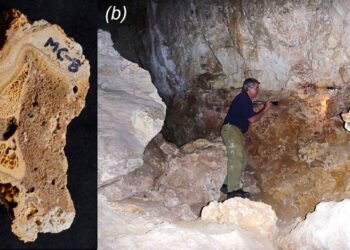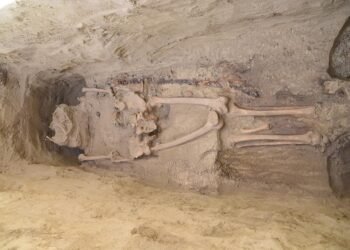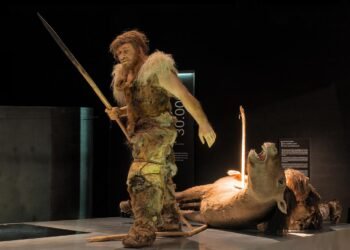Archaeologists in Ukraine have uncovered a fascinating 1,000-year-old cemetery near the village of Ostriv, located approximately 50 miles south of Kyiv.

The site was explored between 2017 and 2022 by researchers Vsevolod Ivakin and Vyacheslav Baranov from the National Academy of Sciences of Ukraine. Their findings were presented at the Archaeological Institute of America’s annual meeting in Chicago.
The Ostriv cemetery consists of 107 graves, with most identified burials placed in wooden coffins. Men were buried with an assortment of weapons, including axes, spearheads, and swords, while some women were adorned with intricate bronze neck rings, considered social markers for females during that era.
Additionally, several individuals had wooden buckets placed at their feet, possibly linked to funerary rituals. The presence of buckets in this context is noteworthy, as it deviates from the customary burial practices observed in the region.

The excavation revealed a distinctive orientation of the graves, facing south and west instead of the typical northward direction observed in the Kyivan Rus during the same period. Traces of wooden coffins were prevalent in most graves, and remnants of funerary food offerings, such as chicken bones and eggshells, were discovered.
A comparison with Western Baltic tribes highlighted similarities in orientation and funerary furnishings, but notable differences emerged. Unlike the Baltic peoples who practiced cremation burials, none of the Ostriv graves exhibited this custom. Additionally, the presence of buckets in burials was distinct from Baltic traditions.
The researchers suggest that these variations may be attributed to constraints imposed on traditional funerary practices by Christian dukes in Kyiv, particularly Volodymyr the Great (r. 980-1015) and Yaroslav the Wise (r. 1019-1054).
The process of Christianization in the 11th century may have influenced the burial customs of Baltic settlers in the region. A stone altar discovered in the cemetery further adds complexity, potentially serving for both Christian and pagan rituals.
Some artifacts found at Ostriv resembled those from the Baltic, indicating the possible presence of individuals who migrated from that region to serve in the Kyivan rulers’ militaries. Volodymyr the Great’s expansive rule included territories reaching into the Baltic region. Notably, this period coincided with the widespread conversion to Christianity in Ukraine, exemplified by Volodymyr the Great’s own baptism around 987.
Unfortunately, ongoing excavations at Ostriv, like many others in Ukraine, have been halted due to the Russian invasion. This conflict has disrupted various archaeological projects, impeding the exploration of valuable historical sites. Despite the challenges, the discoveries at Ostriv shed light on the diverse cultural and religious influences shaping the burial practices of the 11th-century inhabitants of this region.























